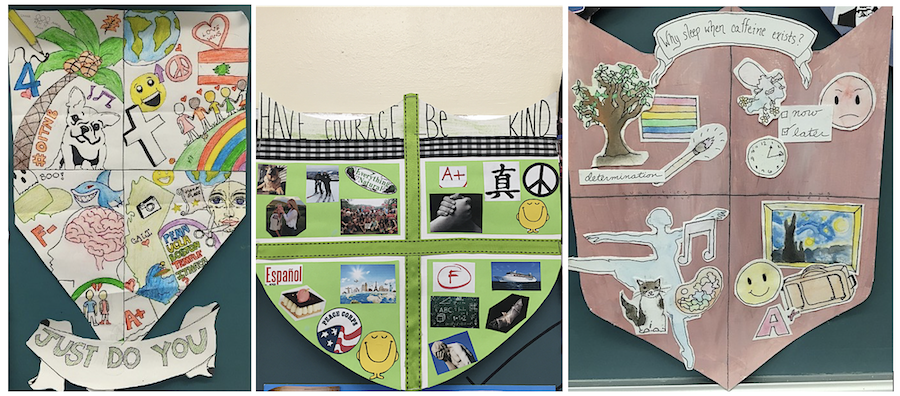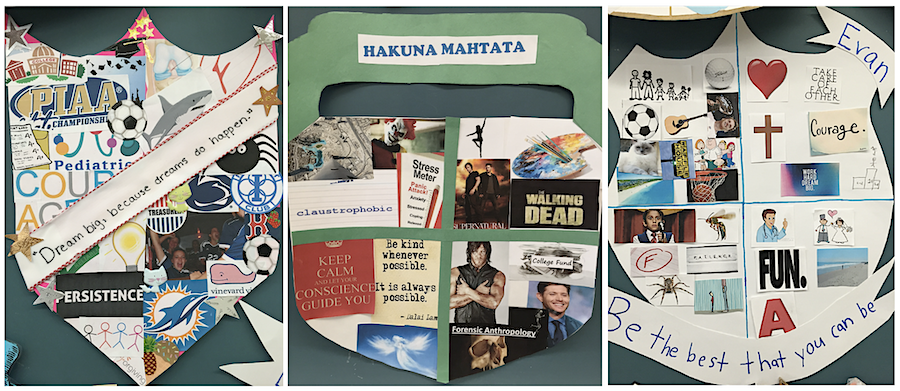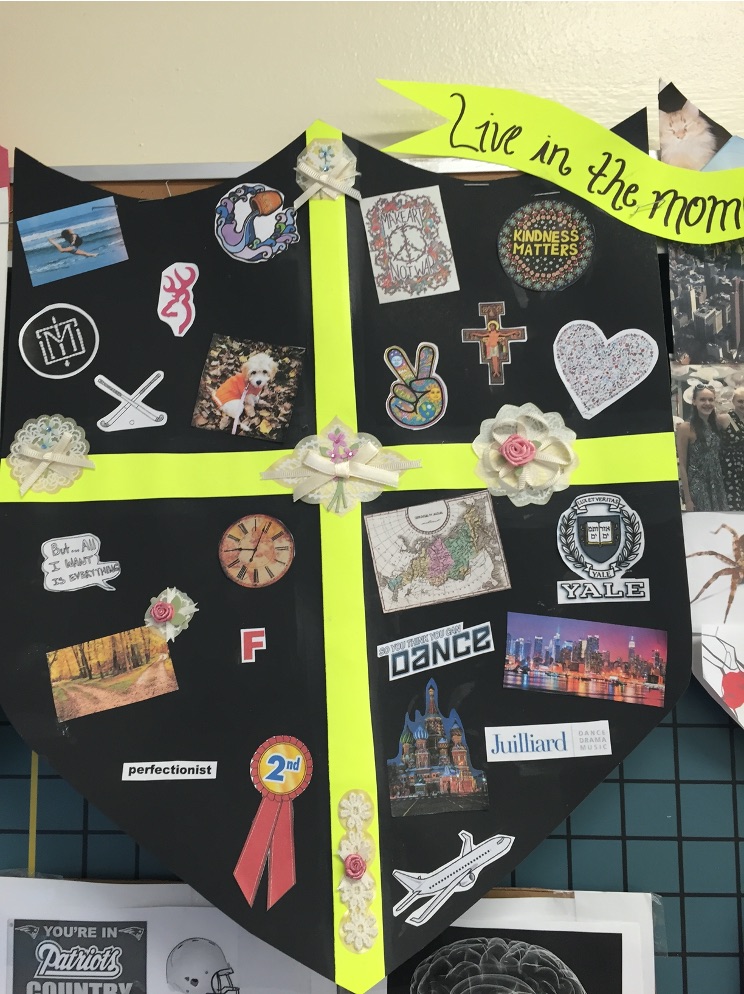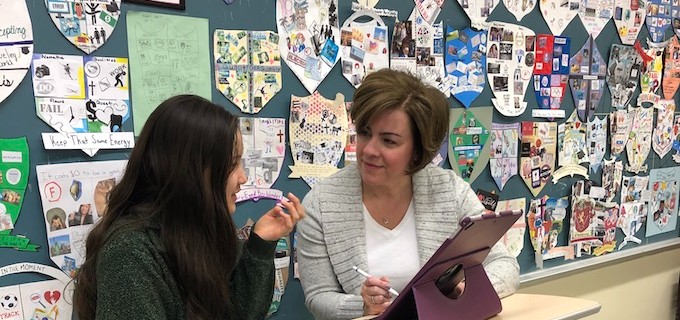Every Student Has an Epic Hero Inside

Focusing on the elements of the epic hero, this activity helps students learn about literary elements while reflecting on their own lives, goals, and obstacles. The archetype of the hero is present in almost every text, regardless of curriculum or culture, and transcends eras and gender.
To complete the activity, students examine four elements that are associated with the hero – the backstory, the good qualities, the flaw, and the quest – and apply these elements to their own lives. They will also think of a personal epithet, add a life motto, and when everything is finished, reflect on what they’ve created.
The Shield
Shields can be found in the stories of most cultures, and usually, the shield reveals the bearer’s identity – by country, by family, and for the best warriors, individually. Many stories incorporate plot twists involving the switching of shields and the ensuing chaos of mistaken identities.
The archetypal nature of the shield makes it a perfect canvas for this activity. The end product will an organized collage of visuals representing the hero’s (i.e., the student’s) backstory, qualities, obstacles, and goals, with a life motto included across it.
The Four Quadrants
I give students templates for different shield shapes and also encourage them to create their own if they desire. The only firm guideline about the shape is that it should not exceed 12” by 14”. After the basic shape is devised, students should create four sections. For each section, students should have a minimum of four pictures.
Section 1: The Hero’s Backstory
Every hero has a background narrative. I instruct the students to consider their own – their families, friends, hobbies, talents, and experiences. From these, they should gather photos or other pictures that represent their lives to this point.
Include an epithet! In addition to the four pictures in this section, I have students include an epithet for themselves. I give them examples such as “Lancelot of the Lake,” “Grey-eyed Athena,” and “Hector, Breaker of Horses.”
We discuss the definition of epithets and their purpose in stories. I encourage students to consider their hometowns, physical attributes, and talents when constructing epithets. The finished epithets can be written somewhere in this “Backstory” section.
Section 2: The Hero’s Qualities
Every hero has strong positive qualities that propelled them to greatness. Students must think of four that they possess. The slightly tricky part for this section is that students must find visual representations for the qualities.
Instead of simply writing the word “kind,” students must find a symbol for the idea. They might choose a picture of a warm smile or open hands. I don’t critique the symbols for “rightness” – if the symbols resonate with the students, they are sufficient for the shields.
Section 3: The Hero’s Challenges
This section represents the hero’s flaws, which are a major part of every narrative. With the students, however, I don’t ask them to think of personality flaws; instead, I ask them to think of the challenges or obstacles in their lives that might hold them back.
Do they have any bad habits, fears, anxieties, or insecurities that they are willing to share? Once again, these should be represented as visuals and not words. For example, procrastinating might be represented with a clock; a fear of failing might be shown with a red “F.”
Section 4: The Hero’s Quest
Every hero embarks on an adventurous journey that helps them grow, and our students are on their own journeys! For this section, they should find pictures that represent four of their goals. These could be aspirations for college or careers; these could be dreams about travel or experiences; these could be short-term goals for the school year.
The Motto
Having a guiding principle in the form of a life motto benefits the bearer, and the shield is the perfect space to include one. Some students have a motto figured out right away—they’ve already incorporated a meaningful saying from their parents or coaches, or from their own learning or reflection.
Some students will claim they “don’t have a motto.” Assure them that now is a perfect time to think of one. They could talk to their parents or research some proverbs. Whatever their choice, the statement should be displayed as a banner somewhere on the shield. It could go across the top or bottom of the shield, or it could be included in the middle.
The Shield Reflection
As a follow-up activity, I have students write a one-page reflection. I give them the following questions and instruct them to choose one:
✻ Which of these sections motivated you the most? How? Why? (Choose one section only.)
✻ Is there a story behind your motto? What is it? Why did you choose your motto? What does it remind you of? Explain how / when you think of it (and give an example).
✻ Imagine a day in your life without your “hero’s obstacles.” What would that day be like? Describe it. How would it feel to live like this? What are three small actions you could take now to bring you a little bit closer to that imaginary day?
✻ Explain your quest (or one part of it). What exactly will it take to attain it? What will it feel like once you have attained it? Imagine that moment and describe it.
✻ Look at your “obstacles” section. What other sections or symbols on your shield balance out the obstacles? How? How could these other parts help you eventually overcome your challenges?
Giving students specific questions such as these compel them to think deeply about one aspect of their shields instead of giving a surface-level overview of the entire shield. If students are simply asked to “reflect on their shield,” they often end up merely listing, in sentences, the pictures they’ve put on it.
I learn a lot about the students through these reflections, but my real hope is that students learn something about themselves in this process.
Displaying the Shields
As we read stories throughout the year, I can refer to these elements – the hero’s background, qualities, flaws, quest, and guiding principle – repeatedly, and the students understand them from the inside-out.
If desired, you could have students present their shields to the class during class time. I usually have students present them on Flipgrid. If your classes are virtual this year, this might be an effective choice for you.
I hang the shields all across the back of our classroom. It’s not simply a display of student work; it’s a visual display of all of our identities – our families, experiences, strengths, obstacles, goals, and principles. These collages represent how we show up in the world; they symbolize how we protect ourselves from life’s onslaughts and challenges.
The display as a whole communicates the collective idea that we know ourselves and where we’ve come from. We know what we believe in. Together, all of us comprise an army of authenticity and individuality, ready to face the world.
This presentation of the Epic Hero activity grows out of material in Marilyn’s book 50 Writing Activities for Meeting High Standards.
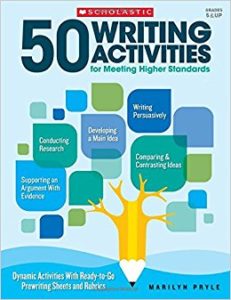
Marilyn’s most recent book is Reading with Presence: Crafting Meaningful, Evidenced-Based Reading Responses (Heinemann, 2018). Learn more about her at marilynpryle.com and read other articles she’s written for MiddleWeb.

